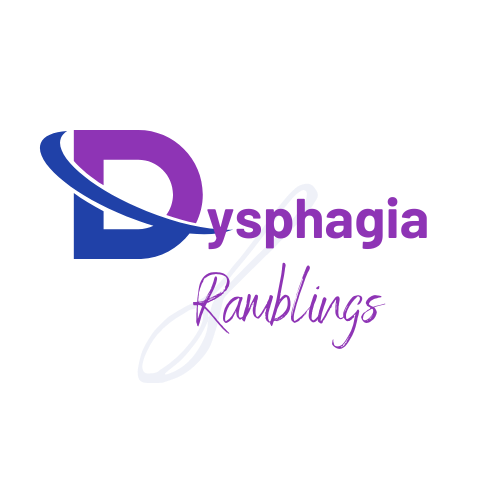
Way back in 2014……
Way back in 2014, an article was published describing Chin Tuck Against Resistance.
When we look at patients with dysphagia from Pharyngoesophageal Segment (PES) dysfunction, we look at strengthening the suprahyoid muscles. These muscles assist in hyolaryngeal excursion and therefore play a part in esophageal opening.
Isokinetic vs. Isometric
CTAR vs Shaker: Both have a component of isometric versus isokinetic. The isometric portion of the Shaker is holding the head up for 1 minute with a minute rest x 3 repetitions. The difference is, with CTAR, the patient is holding a 12 cm inflatable rubber ball and performing a chin tuck against it while seated. When performing the Shaker, the patient is lying flat on the floor and lifting their head only as if they were looking at their toes.
The isokinetic portion is 30 repetitions of up and down head movement 3 times.
This study used 40 healthy individuals (20 male, 20 female) 21-39 years of age. All participants completed the Shaker and CTAR both isometric and isokinetic as indicated above. Data was collected over one session.
What the researchers found:
CTAR: The Chin Tuck Against Resistance was less strenuous than the traditional Shaker, with increased sEMG values during isometric and isokinetic movement. There was a significant increase for the isometric portion of the exercise. These patient had greater muscle activation using the rubber ball and a chin tuck!
Effort was required for the chin tuck, but not for the release. The authors felt is might benefit to have the patient release compression of the ball slowly.
There was greater muscle activation for the isokinetic movement than for the isometric movement during the traditional Shaker. The Shaker also yielded considerable greater effort to lower the head to the mat.
“Clinical trials are now needed, but the CTAR exercises appear effective in exercising the suprahyoid muscles and could achieve therapeutic effects comparable to those of Shaker exercises, with the potential for greater compliance by patients.”
The Results
Overall, CTAR was an effective in exercising suprahyoid muscles in healthy participants.
This looks promising in giving us an alternative for our patients for the Shaker exercise!!
Since the initial study.
There have been several studies since the initial CTAR study in 2014. What are the results of these newer studies you might ask?
Well……
In 2015, head and neck patients that completed CTAR had increased:
- chin tuck strength
- jaw opening strength
- anterior tongue strength
- suprahyoid muscle volume
- maximum mouth opening
In 2016, it was found that CTAR is more specific in targeting the suprahyoid muscles than the Shaker.
In 2017, it was found that there is the same benefits from completing CTAR as there is in completing the Shaker (increased suprahyoid strength, decreased pyriform sinus residue due to increased esophageal opening).
In 2018, Park, et al found improvements in:
- oral cavity
- laryngeal elevation
- epiglottic closure
- vallecular residue
- pyriform residue
CTAR with your patients.
I think we can all agree, CTAR is by far much easier on our patients than the Shaker. Many struggle when lying flat on their backs and struggle to lift their head and maintain the hold. When the exercise does not impede respiration and is easier to complete, we do see greater compliance.
References:
Yoon W.L., Khoo JKP, Liow SJR. Chin Tuck Against Resistance (CTAR): New Method for Enhancing Suprahyoid Muscle Activity Using a Shaker-Type Exercise. Dysphagia (2014) 29: 243-248.
Sze, W. P., Yoon, W. L., Escoffier, N., & Liow, S. J. R. (2016). Evaluating the training effects of two swallowing rehabilitation therapies using surface electromyography—Chin tuck against resistance (CTAR) exercise and the Shaker exercise. Dysphagia, 31(2), 195-205.
Gao, J., & Zhang, H. J. (2017). Effects of chin tuck against resistance exercise versus Shaker exercise on dysphagia and psychological state after cerebral infarction. European journal of physical and rehabilitation medicine, 53(3), 426-432.
You, L. H., & Long, B. Y. (2017). Comparison of Shaker Exercise and Chin Tuck Against Resistance Exercise for Radiation-induced Dysphagia af-ter Nasopharyngeal Carcinoma. Chinese Journal of Rehabilitation Theory and Practice, 23(11), 1317-1320.
Park, J. S., Lee, G., & Jung, Y. J. (2019). Effects of game-based chin-tuck against resistance exercise vs head-lift exercise in patients with dysphagia after stroke: An assessor-blind, randomized controlled trial. Journal of rehabilitation medicine.
Kraaijenga, S. A. C., Van Der Molen, L., Stuiver, M. M., Teertstra, H. J., Hilgers, F. J. M., & van Den Brekel, M. W. M. (2015). Effects of strengthening exercises on swallowing musculature and function in senior healthy subjects: a prospective effectiveness and feasibility study. Dysphagia, 30(4), 392-403.

Did the authors share the specs on the ball such as size and resistance?
What ball do you use? How would you contrast the CTAR with the Neck Slimmer?
Thank you!
Is it contraindicated with trach patients? What ther ex can you use with trach to target same suprahyoid movement?
It may not work for some patients with trachs. You could have them do jaw opening against resistance.
Hello! Do you have a specific CTAR you recommend that is the right size/resistance? Thank you!
There is a CTAR ball available from therasip.com. They have the exact measurements as the research.
Be careful how you evaluate these studies as the ,ensure,ent of the outcome, is confounded – the sEMG lies underneath the ball that is being pushed! Resulting in artifact not true muscle activity !,,,